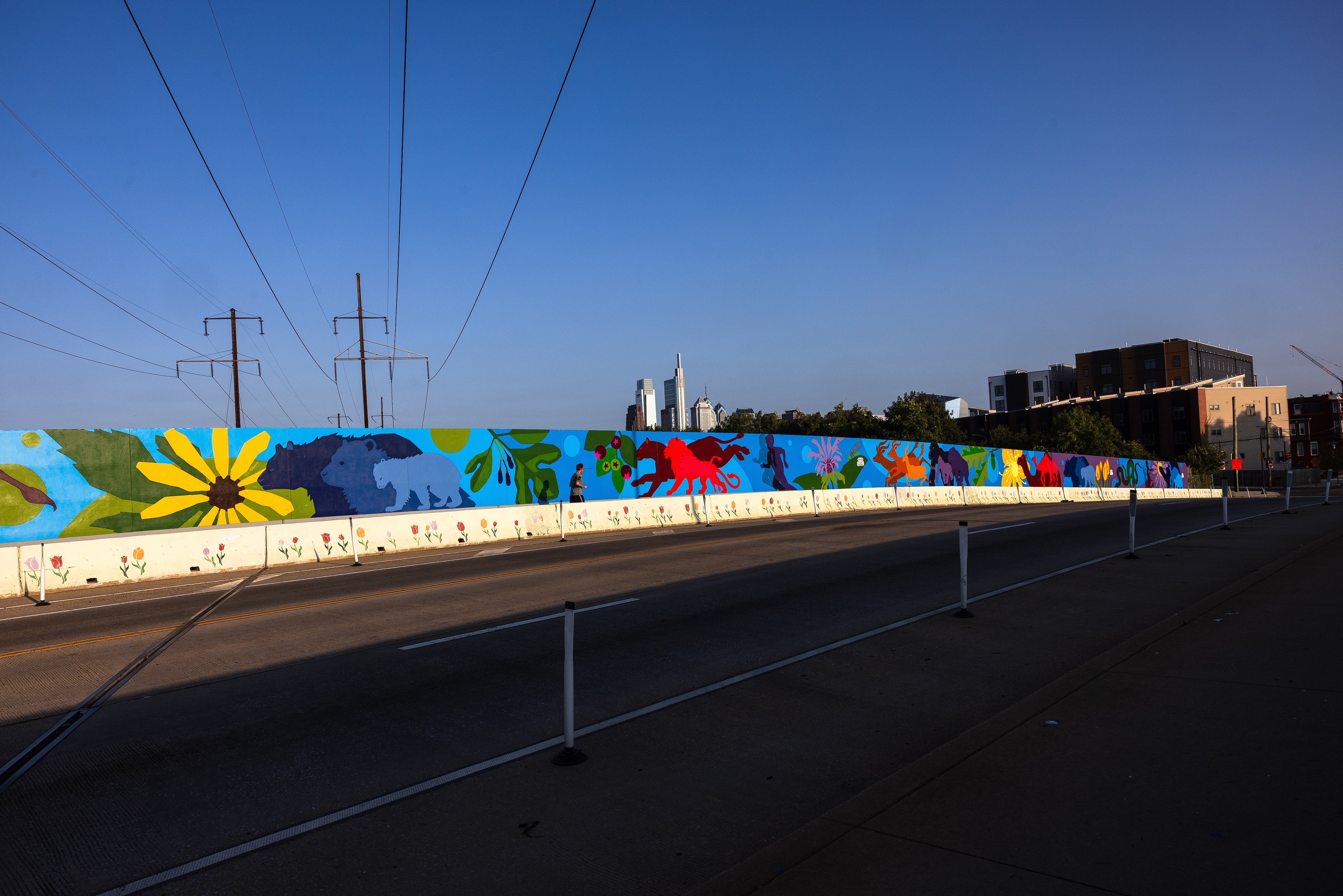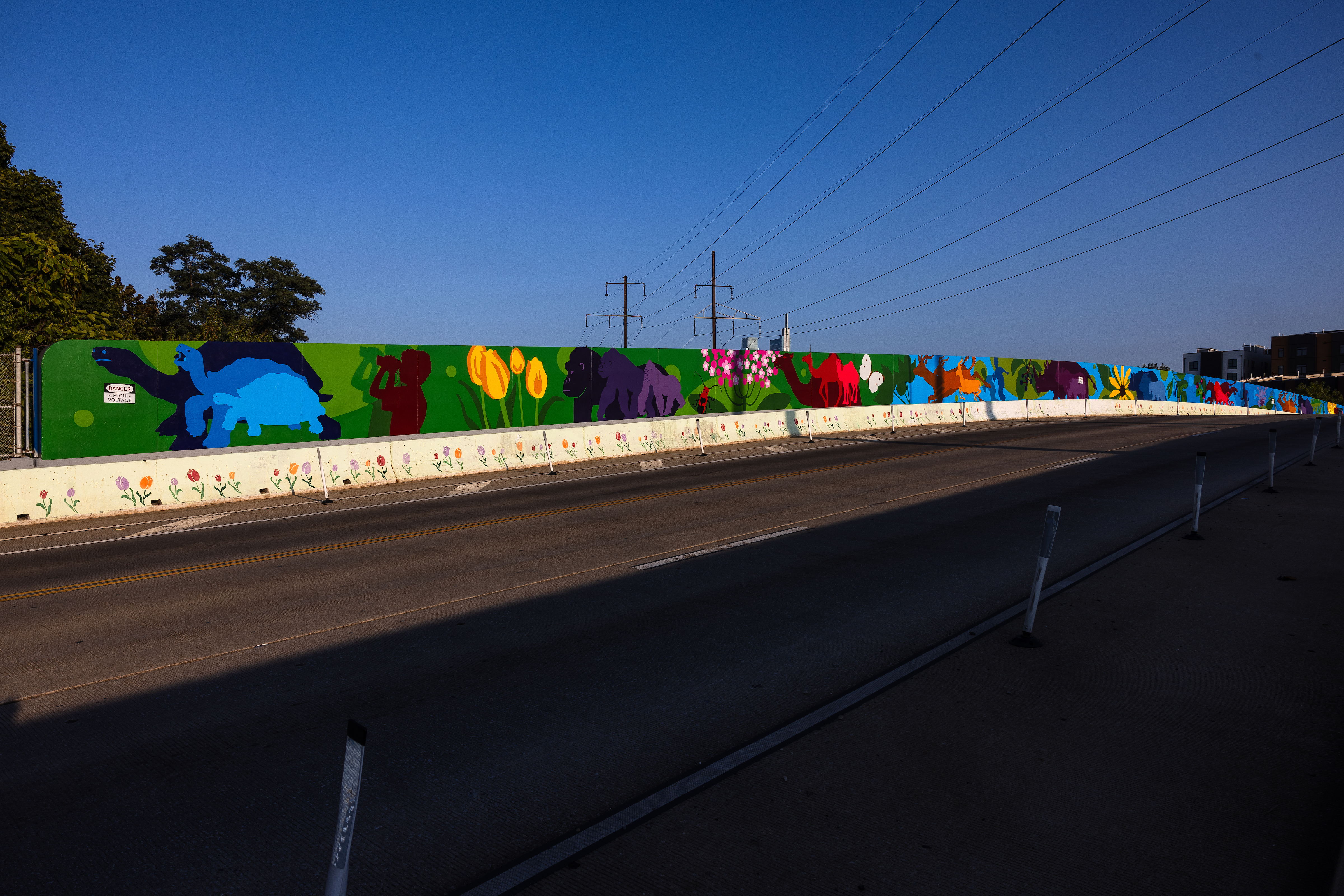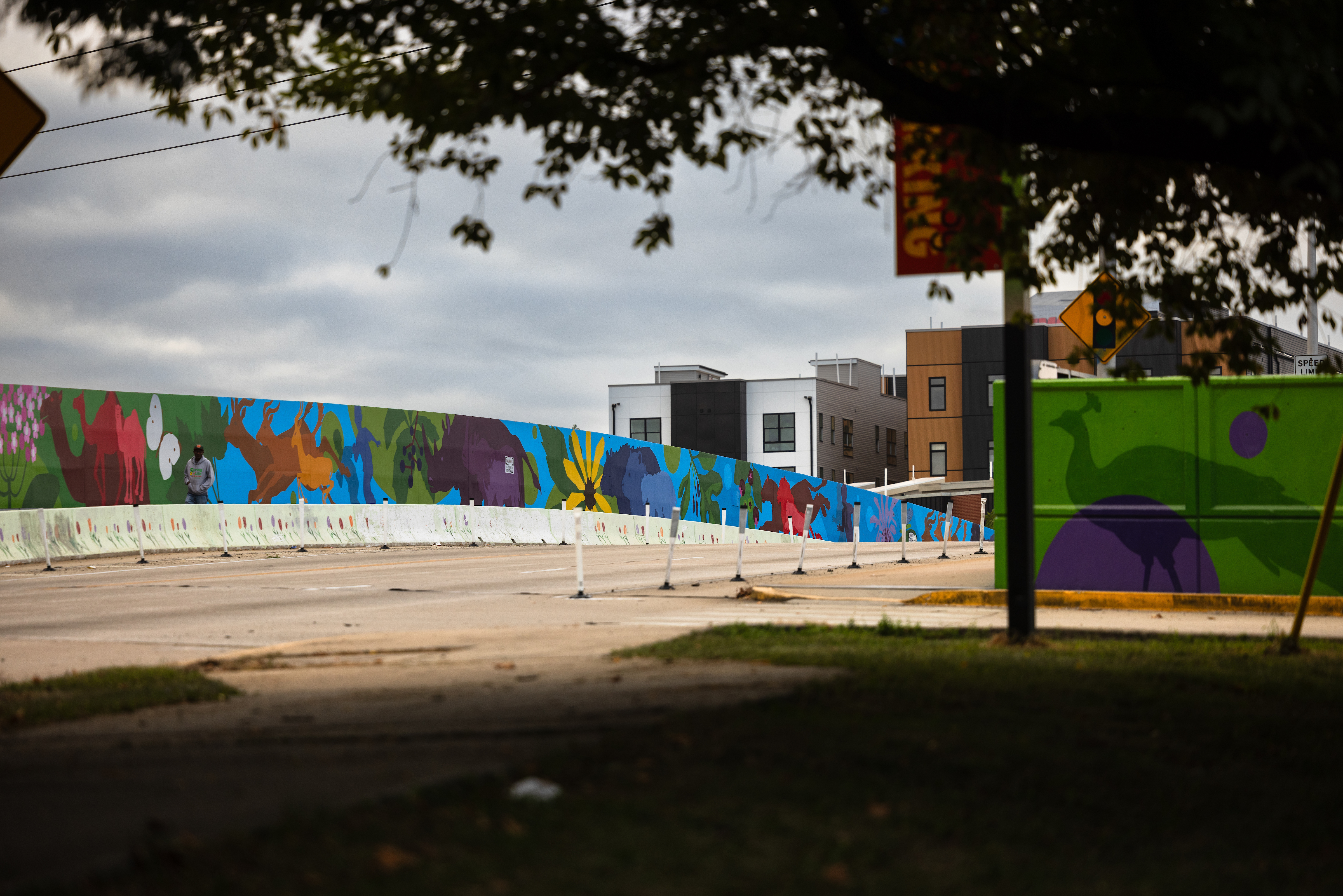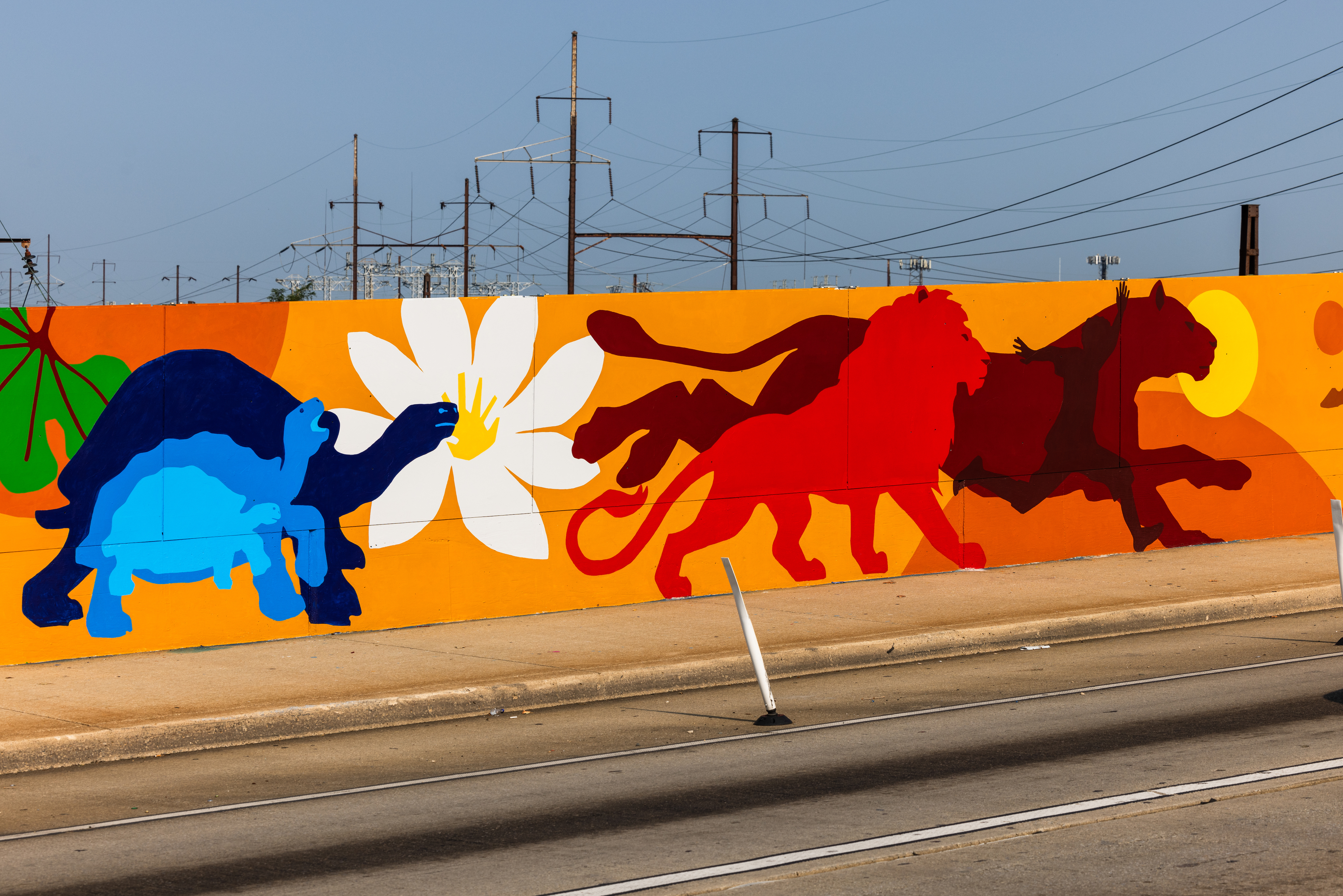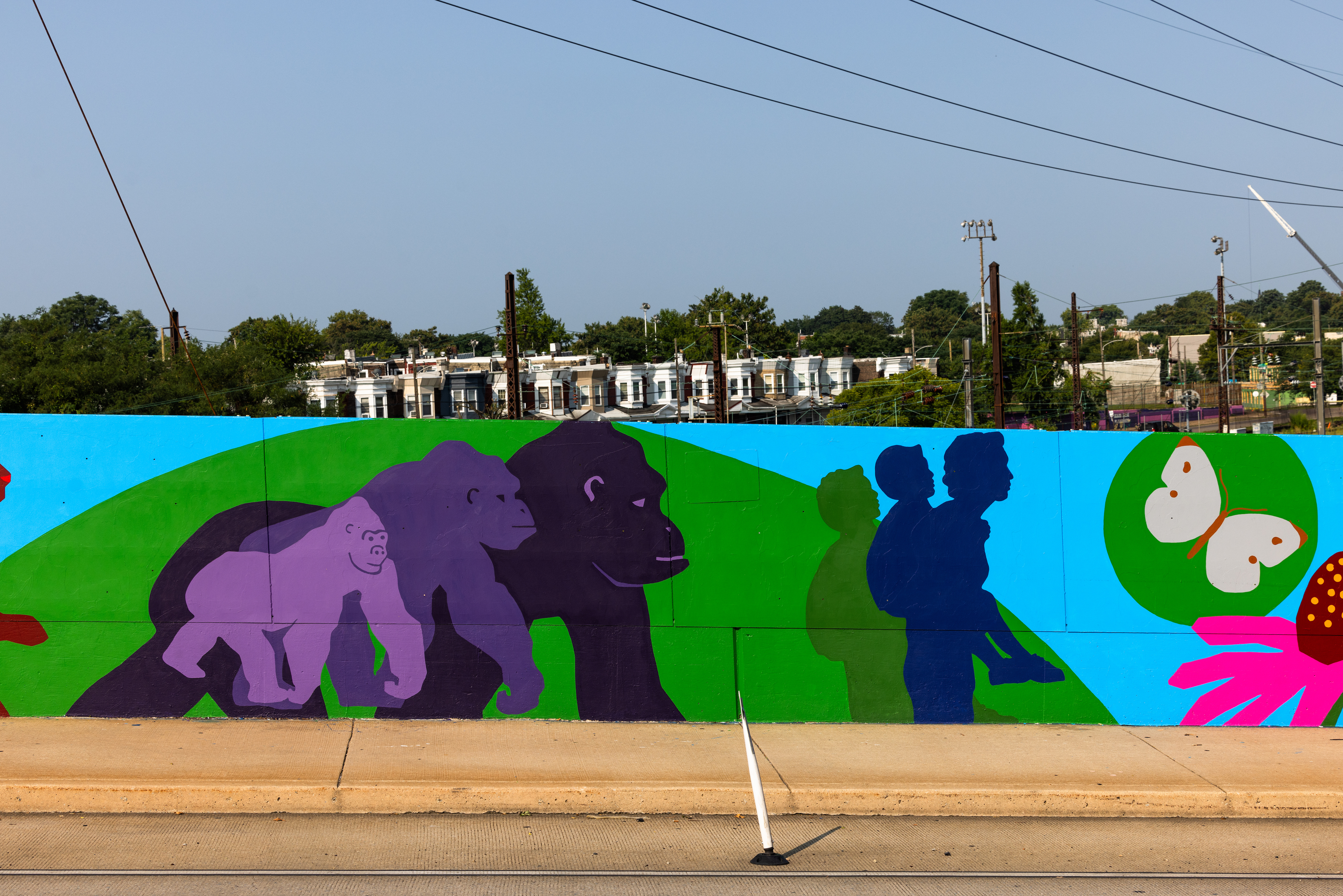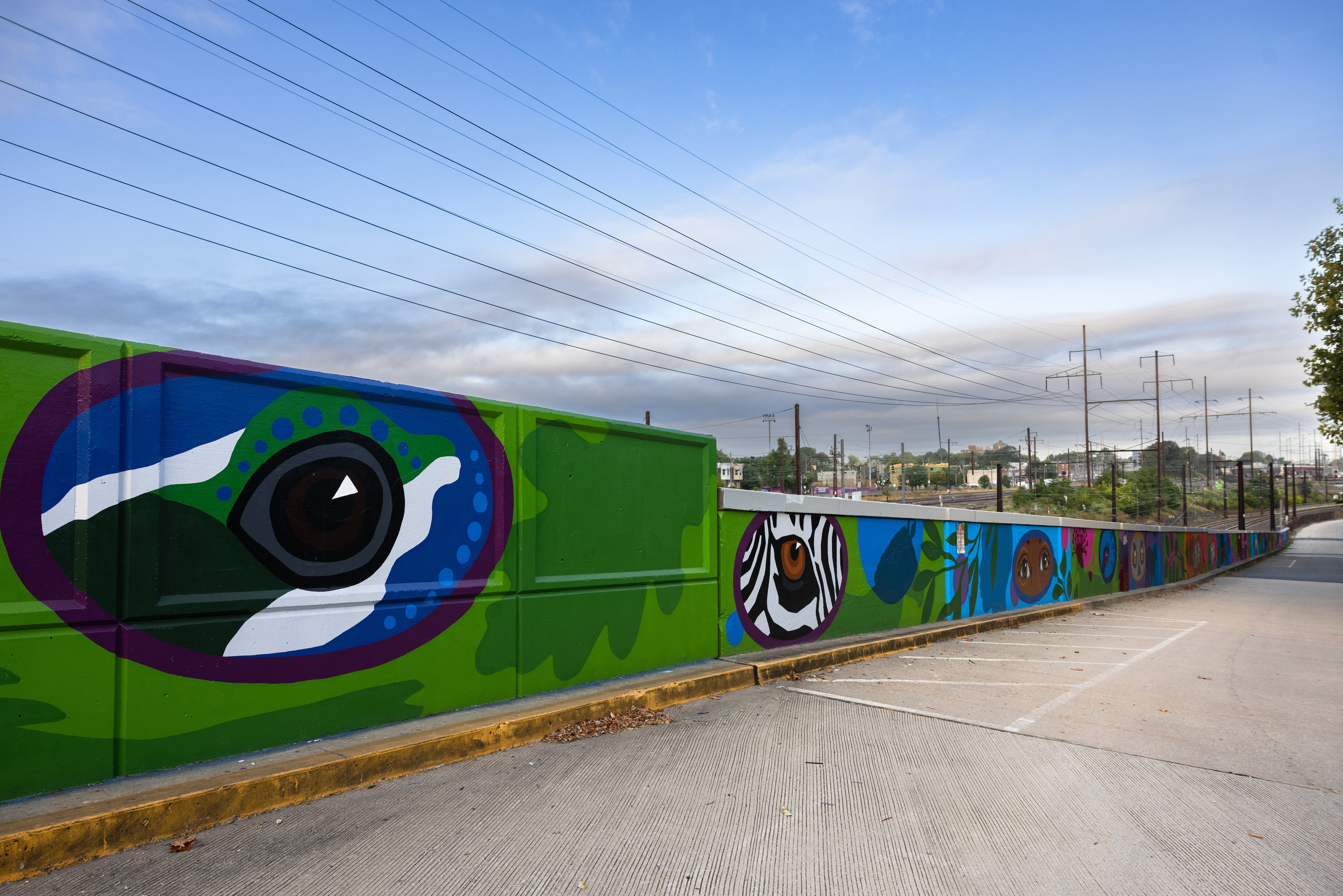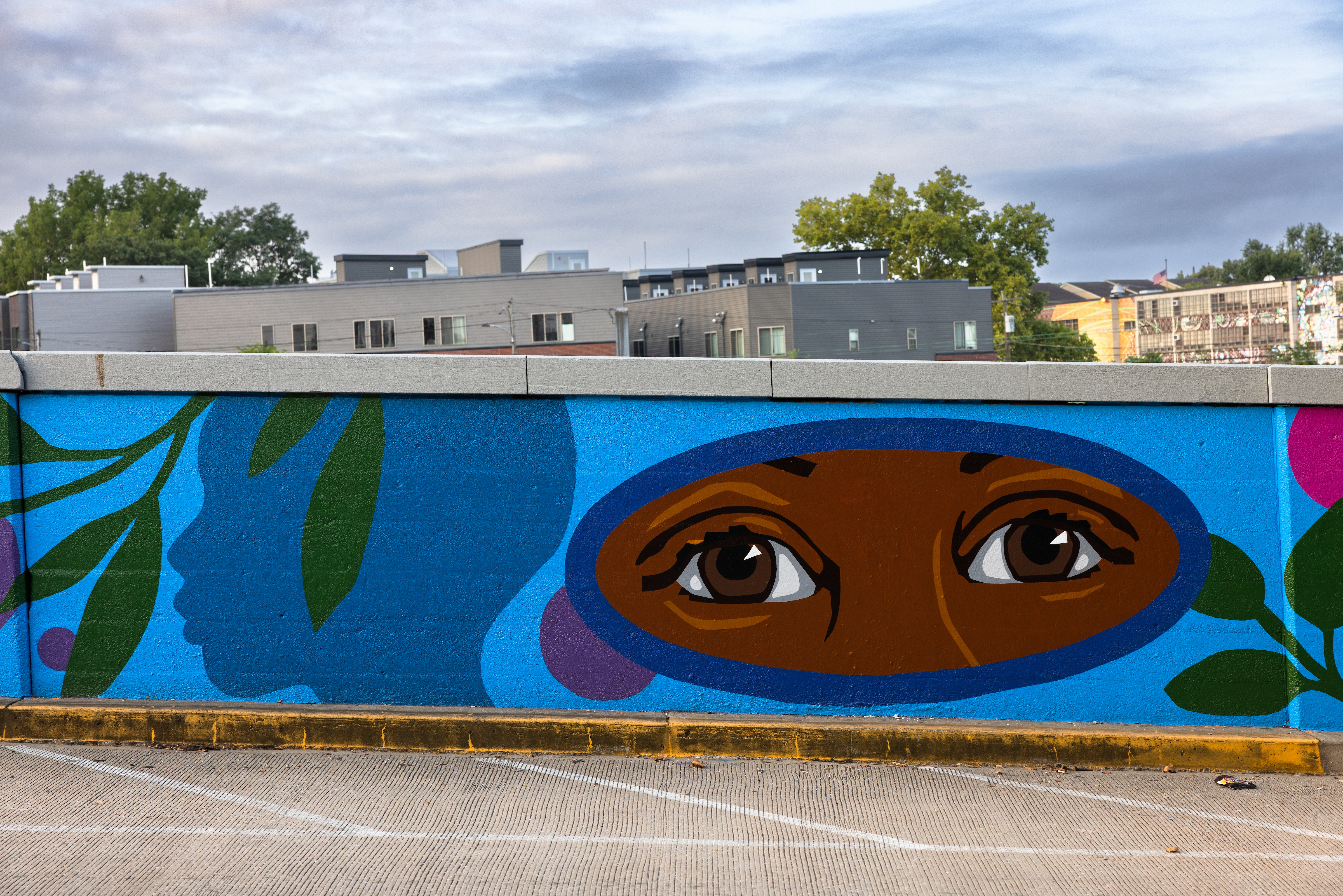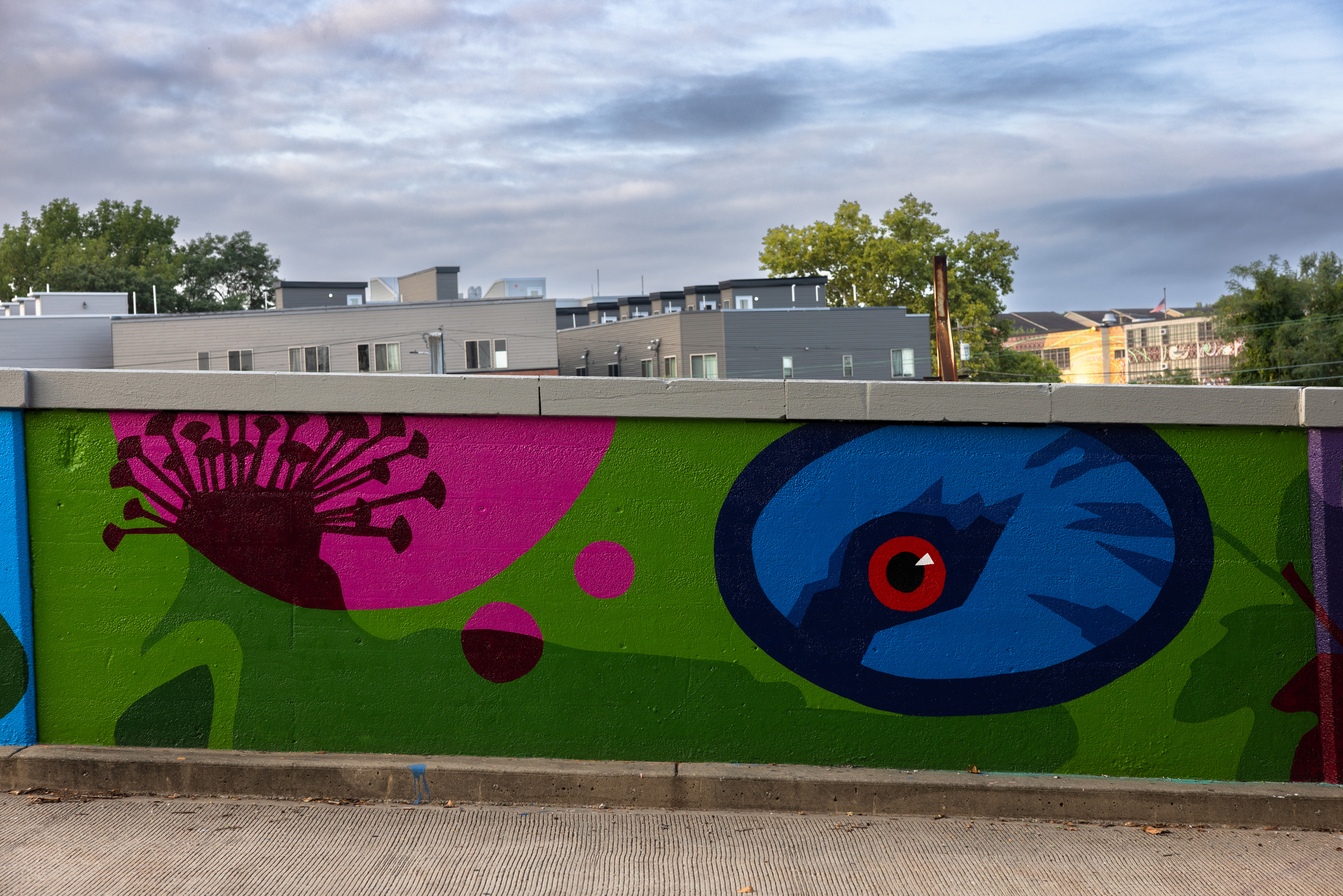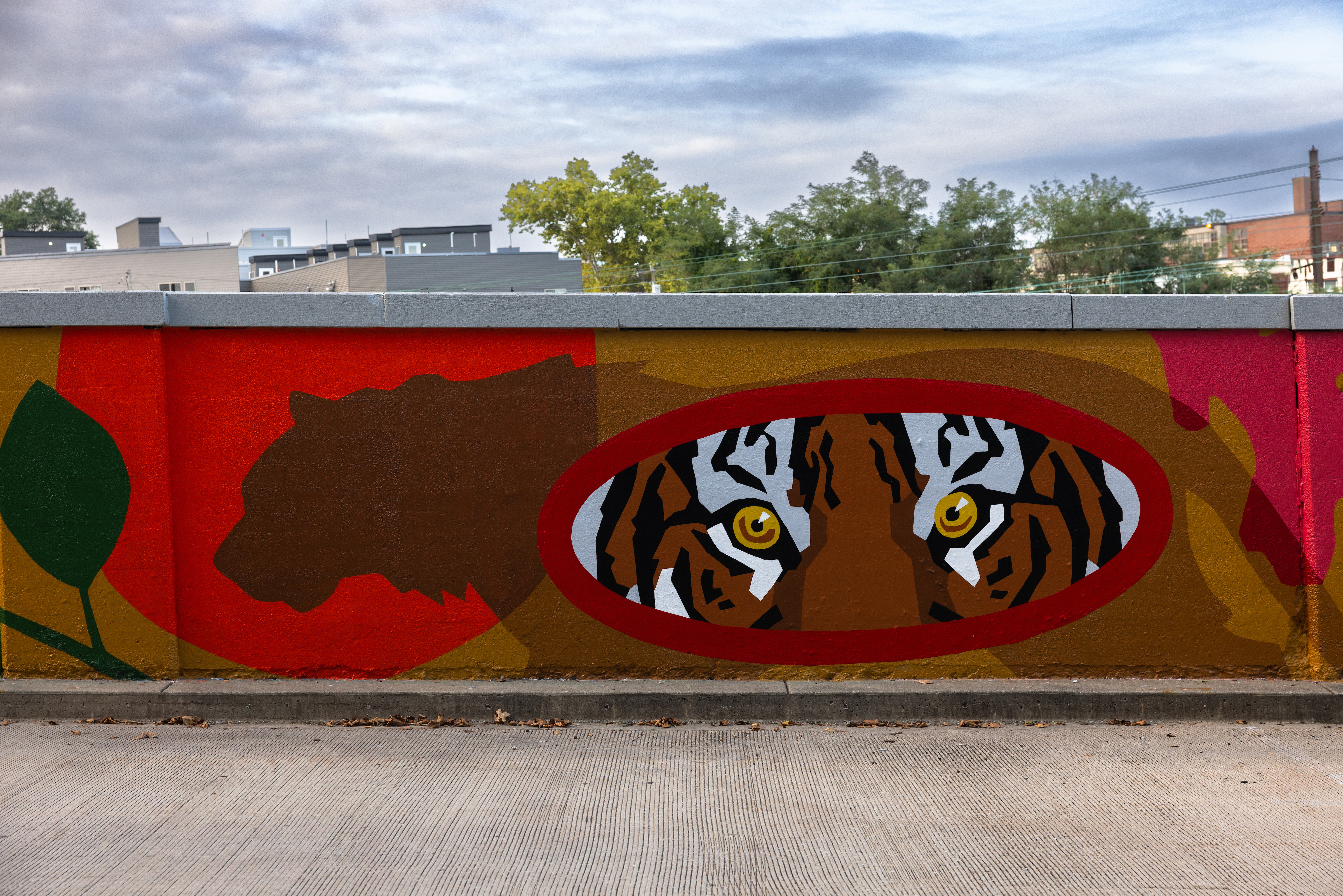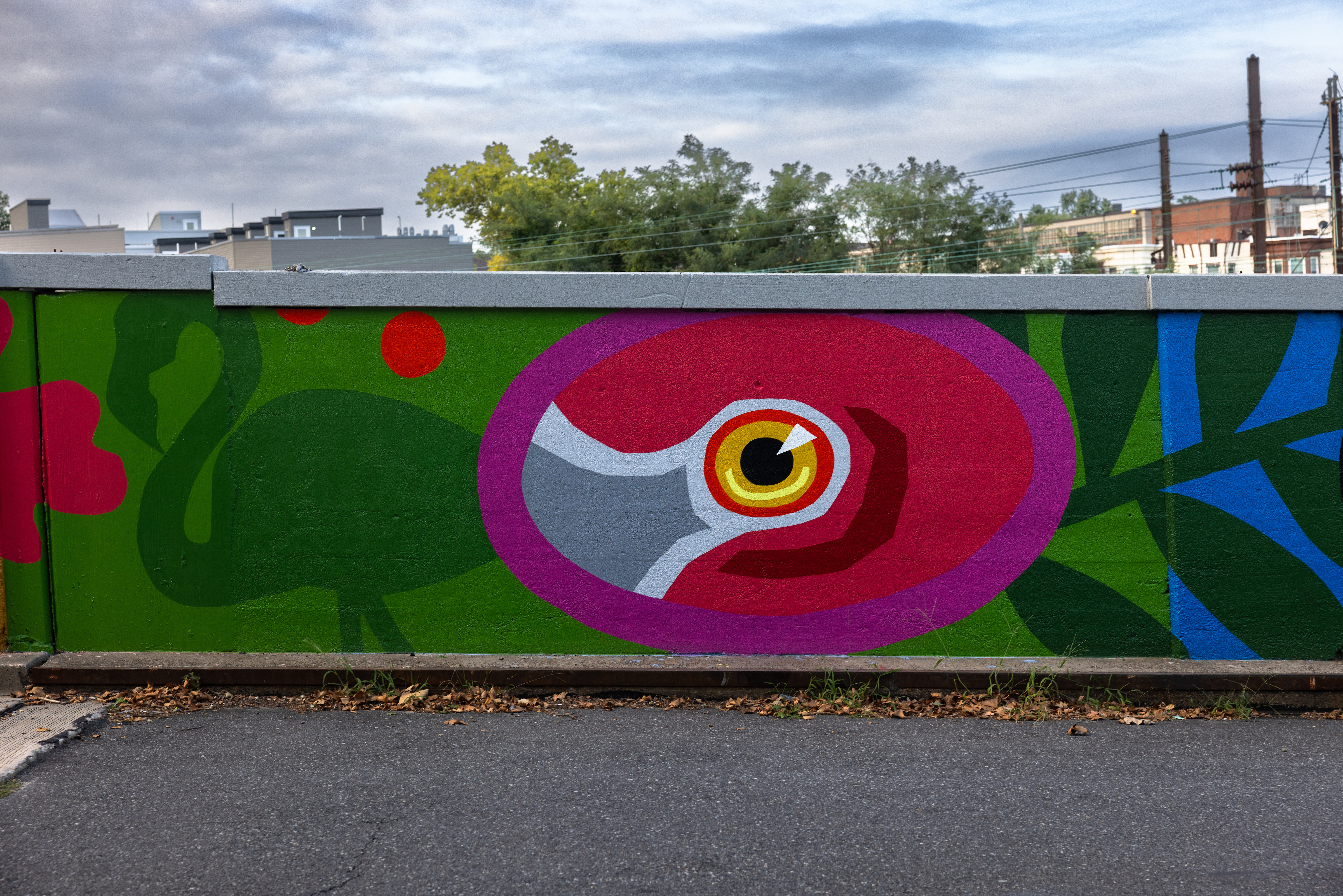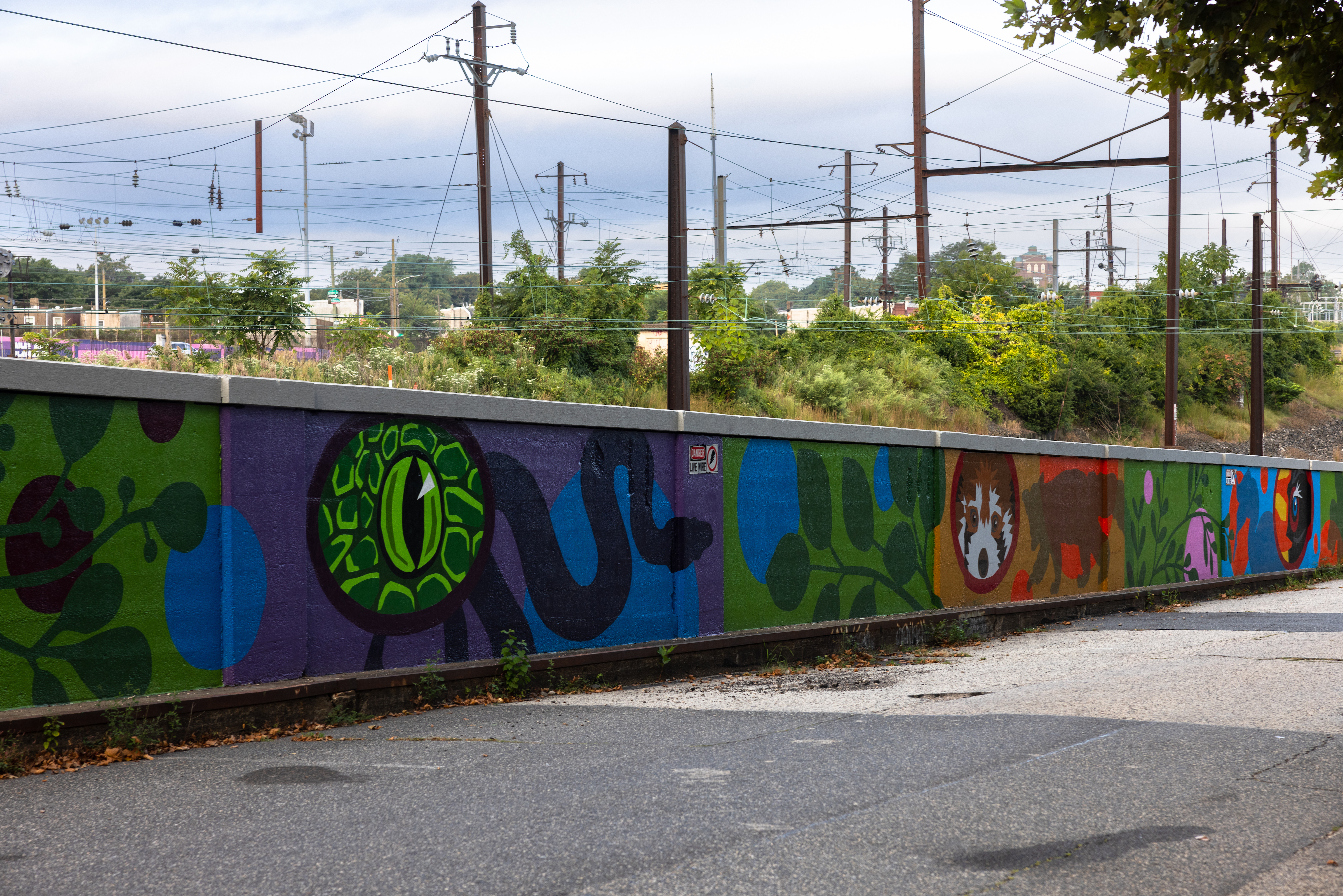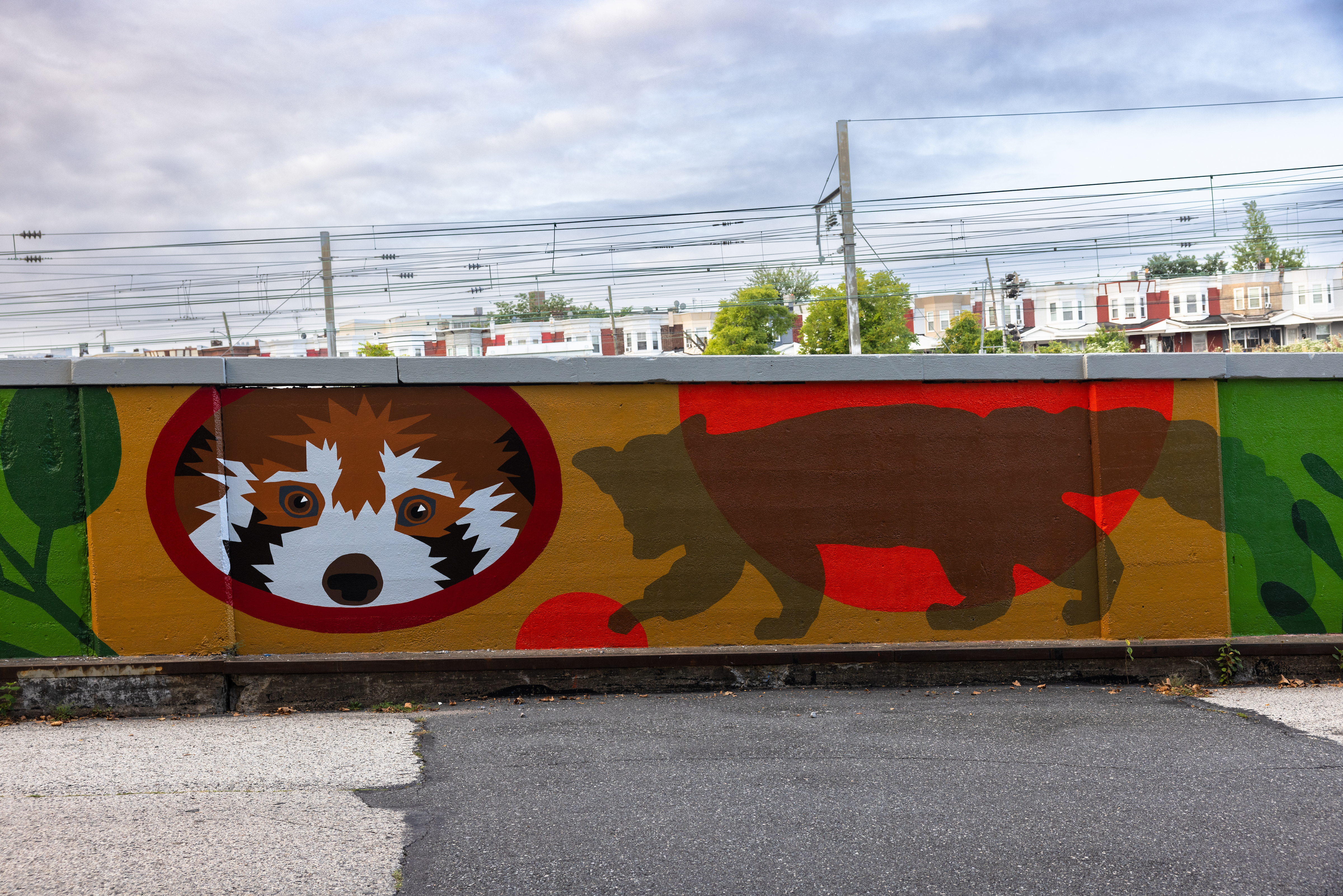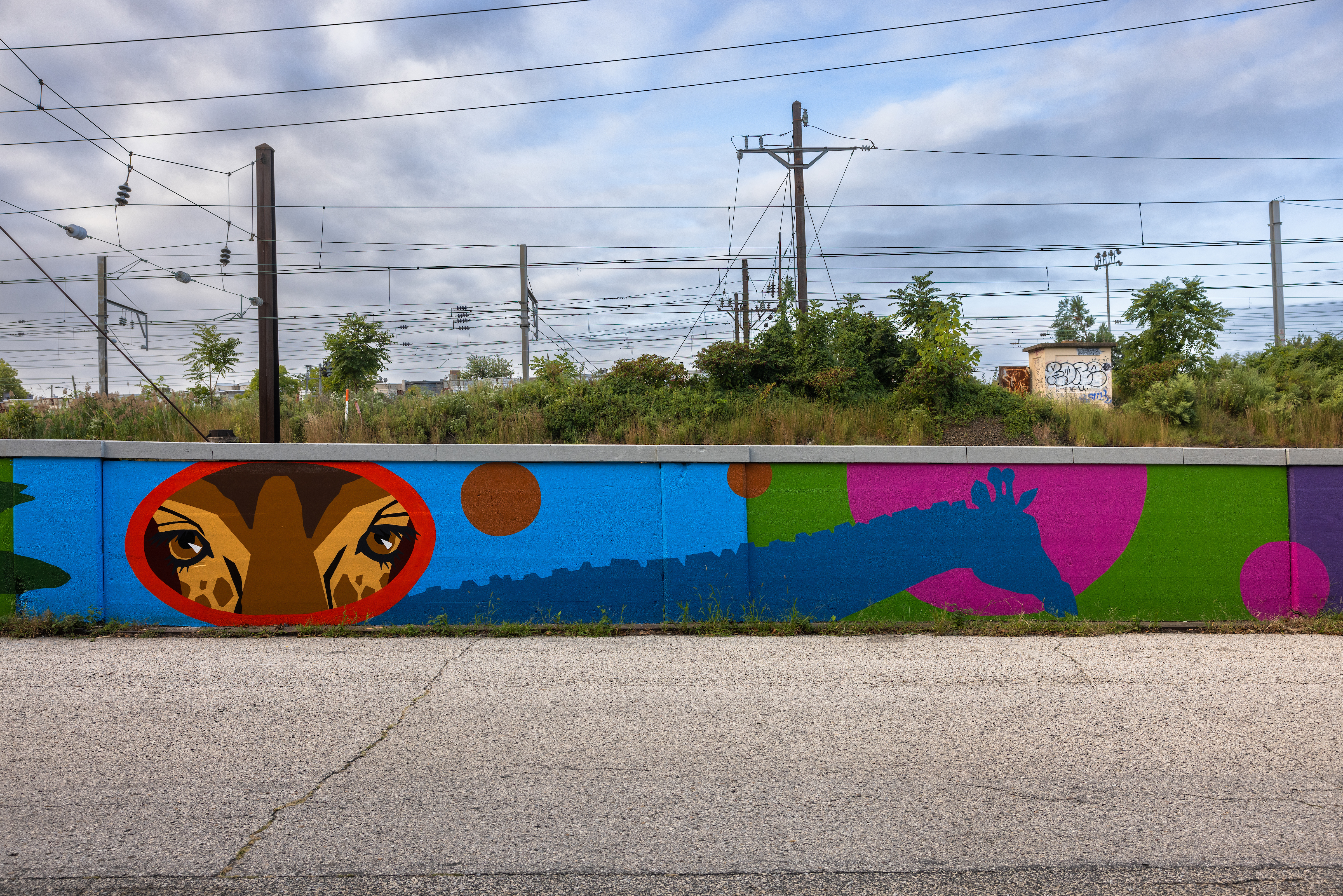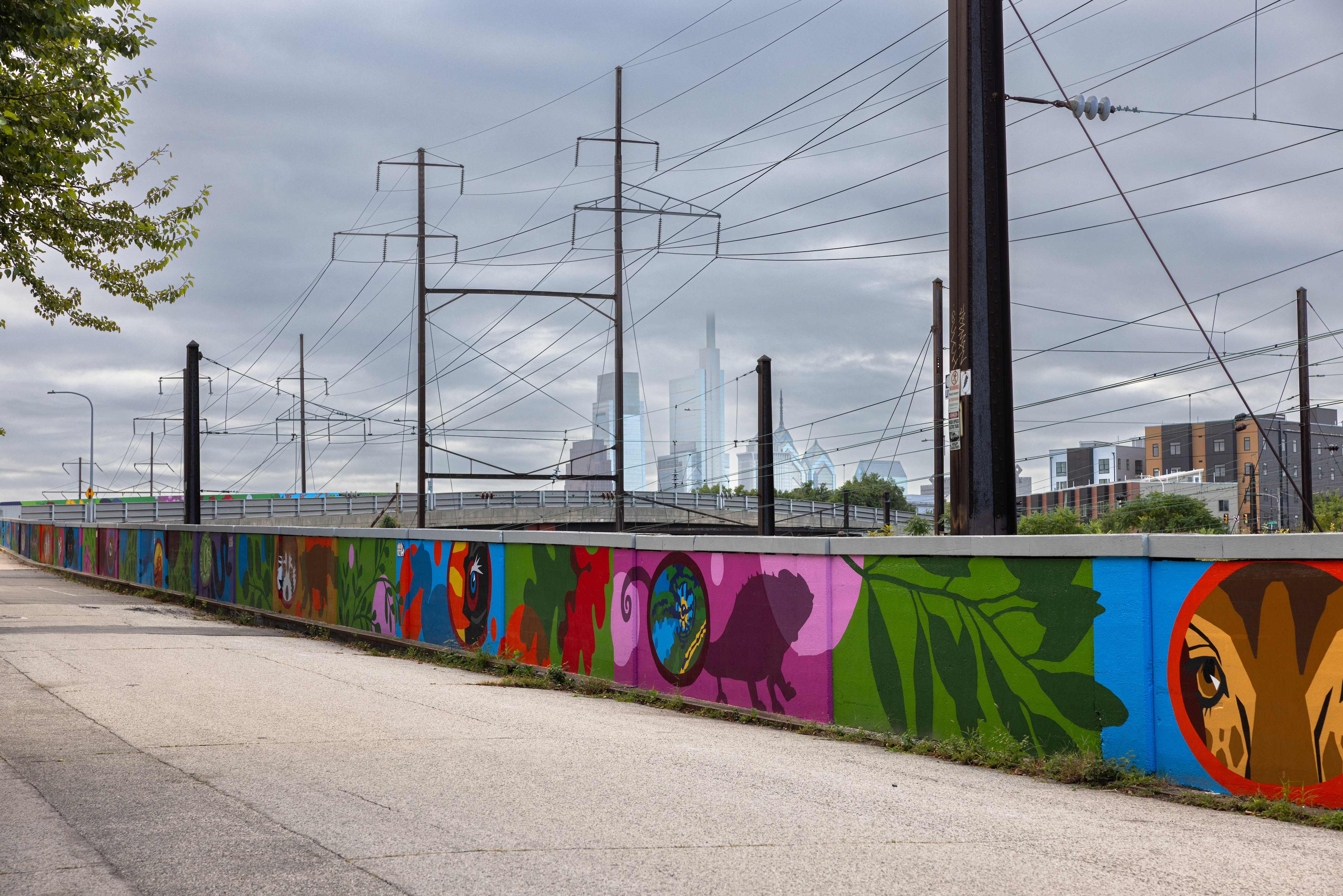Mural Arts and the Philadelphia Zoo Dedicated a New Mural Aimed at Connecting the Community to Conservation

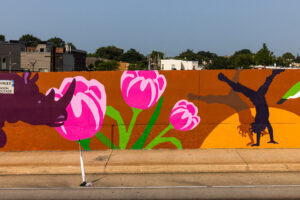
This past May, Mural Arts and the Philadelphia Zoo dedicated and unveiled brand-new works of art aimed at connecting the surrounding community to the Zoo and highlighting the vital conservation of the Zoo. The mural, painted by artists Eurhi Jones and David McShane with designs chosen by the surrounding neighborhoods, uses bright, jubilant colors to showcase the ecosystem that humans and animals share to depict a future where people and wildlife thrive together. The art also invites the Zoo’s nearest neighbors to learn more about how the Zoo and its 1,900 animals can be a more present part of their lives.
“Philadelphia Zoo has been a part of the fabric of Philadelphia since we opened our gates in 1874,” said Philadelphia Zoo President & CEO Dr. Jo-Elle Mogerman. “This mural serves as a reminder of our partnership and that the Zoo is a resource to them and the rest of the region as a place to joyfully connect with nature and wildlife. We are proud to be a part of and support our nearest neighbors in West Philly.”
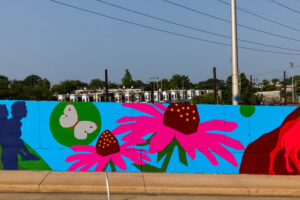
“At Mural Arts, we believe deeply in art’s ability to shine a light on urgent causes and spark dialogue around complex issues—like envisioning a world where humans and animals thrive together,” said Jane Golden, Executive Director of Mural Arts Philadelphia. “This project is a powerful reflection of our mission, especially as it transforms the 34th Street fence—just outside the Zoo—into a vibrant showcase of the Zoo’s Conservation in Action programming across 10 distinct mural panels. These new works serve as a striking backdrop at the Frog Lot, highlighting our ongoing collaboration with the Zoo and our shared commitment to education, beauty, and impact.”
The full scope of this project includes a mural on the 34th Street bridge, a mural on Zoological Drive next to the Zoo’s Frog Parking Lot, and ten custom 5’x10’ of art that highlight the Zoo’s conservation work.
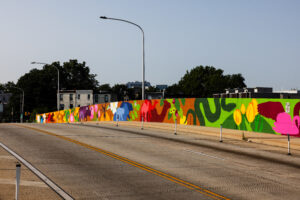
On the bridge, Jones and McShane leaned fully into the metal animal shapes that already existed and built upon them, creating different sizes of the same animal to depict animal families alongside silhouettes of skipping children. Animals include Galapagos tortoises, southern white rhinos, and golden lion tamarins, all animals that currently live at the Zoo. Tulips have become a key signal of Mantua and can be found throughout the piece. On Zoological Drive, this theme continues with eyes added to depict the connection individuals and animals can make with one another while visiting the Zoo. Along 34th Street, the panels highlight the worldwide conservation projects supported by the Zoo, as well as the different ways humans and animals rely on each other.
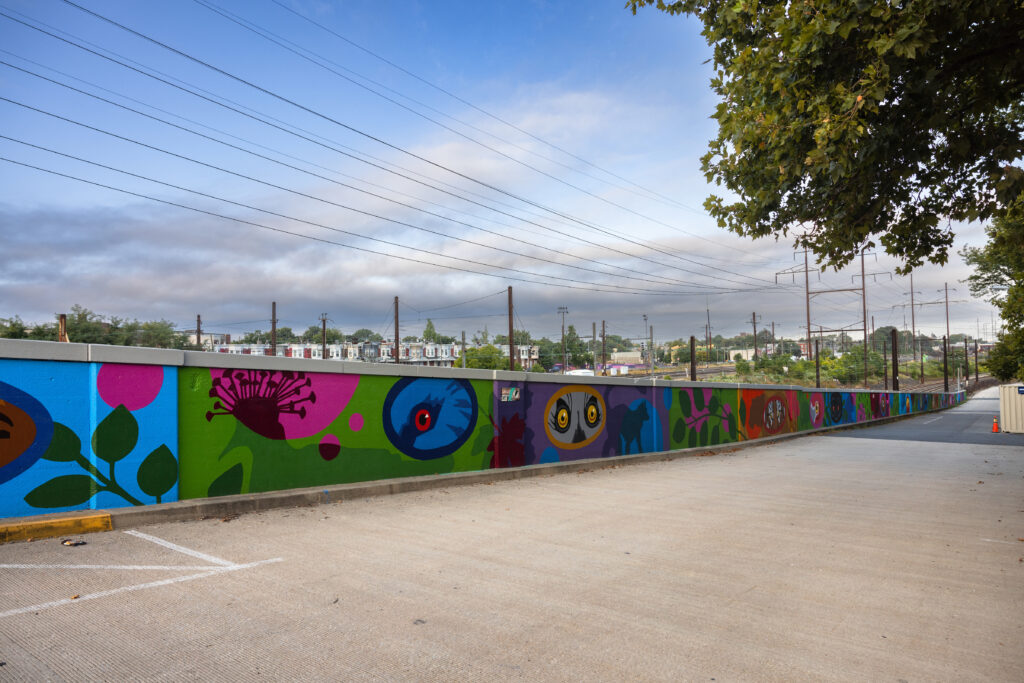
About the Zoo’s signature conservation programs
The 5’x10’ sized panels along 34th Street highlight programs the Zoo participates in to protect the planet. The art shows the impact of human connection and how humans and animals are reliant on each other in different ways.
- Associação Mico-Leão Dourado/Save the Golden Lion Tamarin: Since 1992, the Philadelphia Zoo has played an integral role in the conservation efforts for one of the world’s most threatened primates, the golden lion tamarin (GLT). In the 1970s, there were fewer than 200 individuals living in the wild. Working with other zoos on breeding programs and with communities in Brazil to connect fragmented habitats, more than 2,500 GLTs exist in the wild today.
- Rodrigues Environmental Education Program/Mauritian Wildlife Foundation: In the 1980s, the Philadelphia Zoo was a part of a team of zoos that began breeding Rodrigues fruit bats in human care. At that time, there were only 100 left in the world; today, 20,000 bats live on the island of Rodrigues. The Zoo also worked with communities in Rodrigues to create the Rodrigues Environmental Education Program (REEP), which encourages locals to take action for wildlife.
- Council of Contributors: Philadelphia Zoo has partnered with the Council of Contributors (COC) to help protect threatened populations of white rhinoceros in South Africa. Focusing on ending the poaching crisis, part of the project involves anti-poaching K9 units. These specially trained dogs work with human companions in the wild to help find rhinos, poachers, and illegally harvested rhino horn.
- New Nature Foundation: New Nature Foundation (NNF) strives to conserve wild animals and wild places through education, empowerment, and an emphasis on creative solutions that promote people living in harmony with nature. Their work focuses on Kibale National Park in western Uganda. One of NNF’s most popular programs replaces traditional cooking fires that lead to forest depletion with energy-efficient stoves that save trees.
- AZA SAFE American Turtle: In 2015, the Association of Zoos and Aquariums created the SAFE program. SAFE, which stands for ‘Saving Animals From Extinction,’ relies on the collective expertise of AZA-accredited organizations to make a significant impact on the survival of endangered species. The American Turtle SAFE Program focuses on conservation efforts for turtle species, including the wood turtle, Blanding’s turtle, and all terrapin species. Philadelphia Zoo works in the field to help restore turtle habitats and measure and record progress.
- Zoo Amaru: Since 2010, the Philadelphia Zoo has worked in South America with Zoo Amaru to help protect several species of threatened frogs native to Ecuador. Conservation programs include long-term frog population monitoring and education in local communities. Their Amphibian Conservation Center breeds critically endangered amphibians. Zoo Amaru also supports other threatened native wildlife, including Andean bears.
- Mantua Civic Association Pollinator Corridor: Philadelphia Zoo takes an active role in local conservation through the Pollinator Corridor. The Mantua Civic Association (MCA) founded the ‘Bulbs Not Bullets’ initiative to encourage community members to engage with gardening, beautify the neighborhood, and decrease violence. The Zoo provides expertise and native plants to support the project and native pollinators.
Mural by the numbers
- Total running length: 1,516 feet
- Total square footage: 9,673 square feet
- Supplies needed: 40 gallons of primer + 49 gallons of paint + 64 gallons of sealer and UV-protectant varnish = 153 gallons of materials needed
- Number of animals featured in all the mural designs: 222
- Number of Humans featured in all the mural designs: 55
- Three Community Paint Day Events at the Zoo: approximately 60 participants

